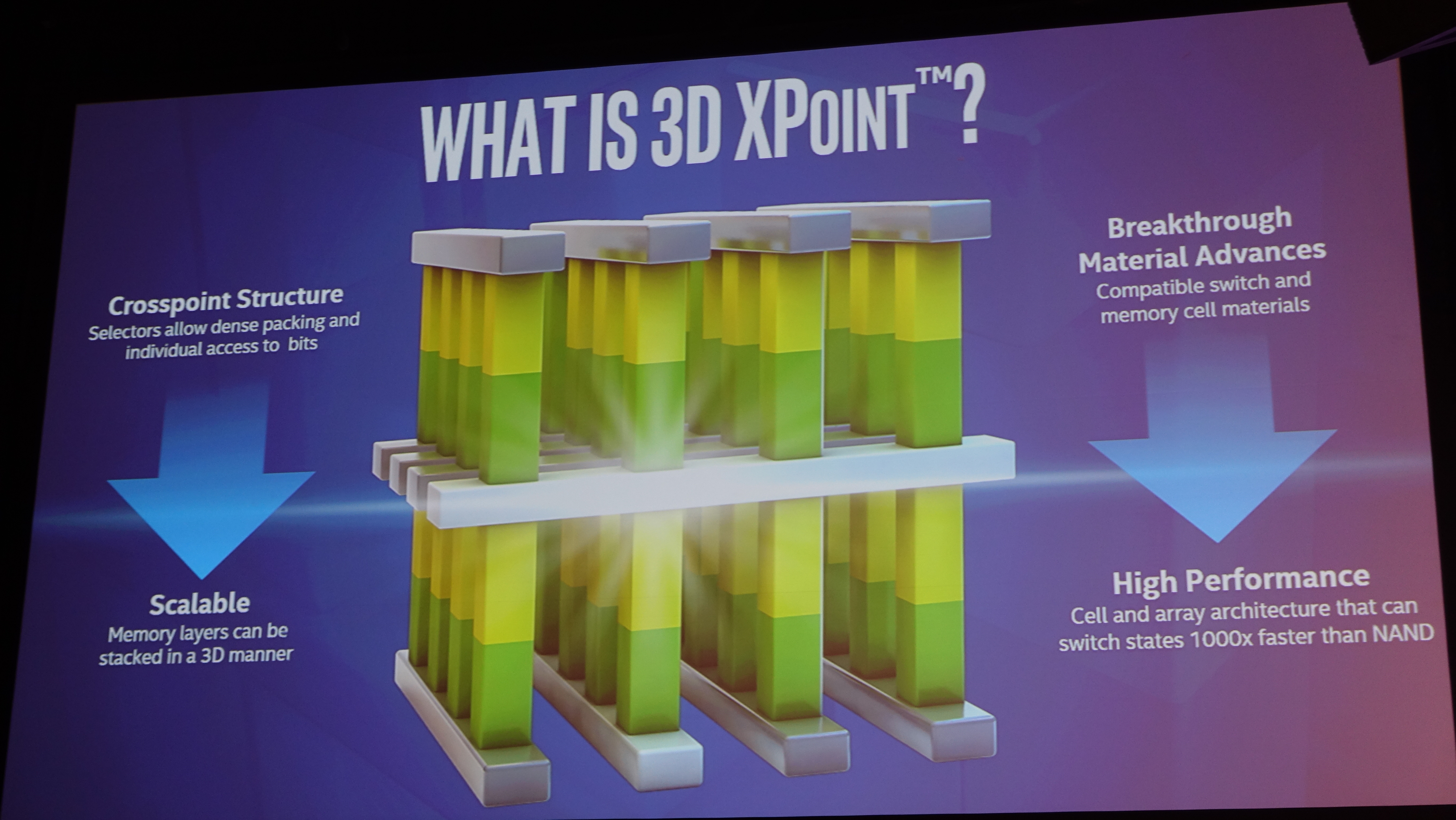Intel Optane brings the storage octane to SSDs
Faster memory

With a dense, stackable design, Intel has been promoting the merits of 3D XPoint as being significantly faster than the storage available today. The technology was developed jointly between Intel and Micron, and at IDF 2015 Intel CEO Brian Krzanich announced that Intel will be bringing 3D XPoint to market in 2016 under its Intel Optane brand.
Optane promises to be 1,000 times faster with 1,000 times the endurance of NAND while being 10 times denser than conventional memory.
Because memory is written at the cell level rather than in block arrays, data can be accessed more quickly and efficiently with Optane's 3D XPoint technology.
On stage, Krzanich showed that an early prototype of an Optane SSD can access data up to seven times faster than Intel's leading NAND-based solid state drive. Krzanich says that this is the world's first live demonstration of 3D XPoint in action.
Form factors
Intel said that Optane products will be available in standard solid state PCIe form factors as well as a DIMM module. The PCIe form factor can be used in form factors spanning Ultrabooks to servers, while the DIMM module can be used in Xeon-based systems for more bandwidth.
Intel did not announce pricing for Optane.
The 2016 availability matches what Micron announced. In late June, Intel and Micron told TechRadar that even though the technology is jointly developed, each company will go to market separately with its own products.
Are you a pro? Subscribe to our newsletter
Sign up to the TechRadar Pro newsletter to get all the top news, opinion, features and guidance your business needs to succeed!
According to Intel, 3D XPoint and Optane is the first memory breakthrough in 25 years since the arrival of NAND.
Intel said that when coupled with Skylake and the new integrated Iris and Iris Pro graphics, gamers will also see speed improvements with Optane, Intel said in a separate gaming-focused session at IDF. Optane can lead to more realistic and immersive gaming experiences with faster refresh rates.
For enterprises, Optane can be used for faster data analysis and real-time analytics.
- Read our guide on how to replace the SSD in your business notebook